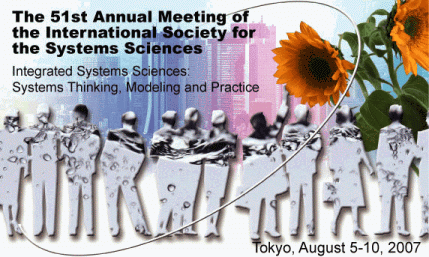LIVING SYSTEMS THEORY AND ENTITY-SYSTEMS THEORY
Abstract
Living Systems Theory (LST) (Miller, 1978) provides a much more robust explanation of the process-structure of living systems than the earlier sense-response, action-reaction approach. By adopting an input-throughput-output approach, LST opens up the interior of a system to analysis and synthesis. Such robustness is characteristic of LST. Three elements of LST, however, cannot be characterized as robust. They are: (1) the concept of dispersed critical subsystems, (2) the neglect of the pervasive influence of conceptual systems on the information subsystems of living systems, and (3) the neglect of processes by which individual social systems (groups through supranational systems) emerge. Those weaknesses of LST may be mitigated significantly by the introduction of that which I term entity-systems theory (e-s theory). By that theory, we acknowledge that there exists, in the empirical reality we examine, entities that together form a subclass of the class of all elements standing in interaction. These entities are systems that take on characteristics such as emergence, self-organization, autonomy, and reproduction. Furthermore, we acknowledge that the class of all entities contains at least two subclasses, namely, biological entities and social entities. The two types of entities are distinctly different although both types require the same or similar critical subsystems. Fundamentally, a living system defined by LST is an autonomous entity that has many internal components and subsystems and often has many cross-boundary subsystems as well. The cross-boundary ones are termed outwardly dispersed subsystems. Some of the outward dispersion is well defined by a concept of boundary that allows inputs and outputs of matter-energy and information. Some other, however, is better defined by an attractor concept. According to e-s theory, a social entity very well may have subsystems of varying characteristics that reach into its environment under varying degrees of entity control. E-s theory acknowledges that social entities are not usually reproduced in a manner directly analogous to that of biological entities. Instead, processes of emergence occur whereby social systems of varying characteristics take on the critical subsystems identified by LST and at some stage of development become autonomous. E-s theory expands our attention to include the influence of conceptual systems at the level of detail characteristic of LST. By e-s theory, living systems are identified as entities that have the matter-energy and information process-structure postulated by LST but that also include a significant proliferation of conceptual systems. Those conceptual systems determine in some degree the kinds of information that living entities process. Miller purposefully constructed a scientific theory that concerned the material processes of life. E-s theory retains that approach but seeks to better capture the influence of conceptual systems on those processes.Published
2007-07-31
How to Cite
Swanson, G. (2007). LIVING SYSTEMS THEORY AND ENTITY-SYSTEMS THEORY. Proceedings of the 51st Annual Meeting of the ISSS - 2007, Tokyo, Japan, 51(2). Retrieved from https://journals.isss.org/index.php/proceedings51st/article/view/576
Issue
Section
Living Systems Analysis

